




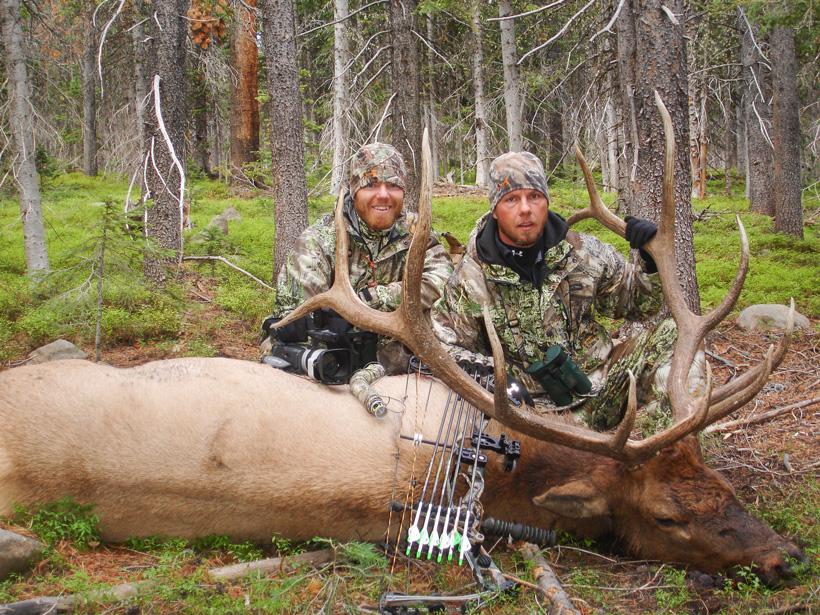

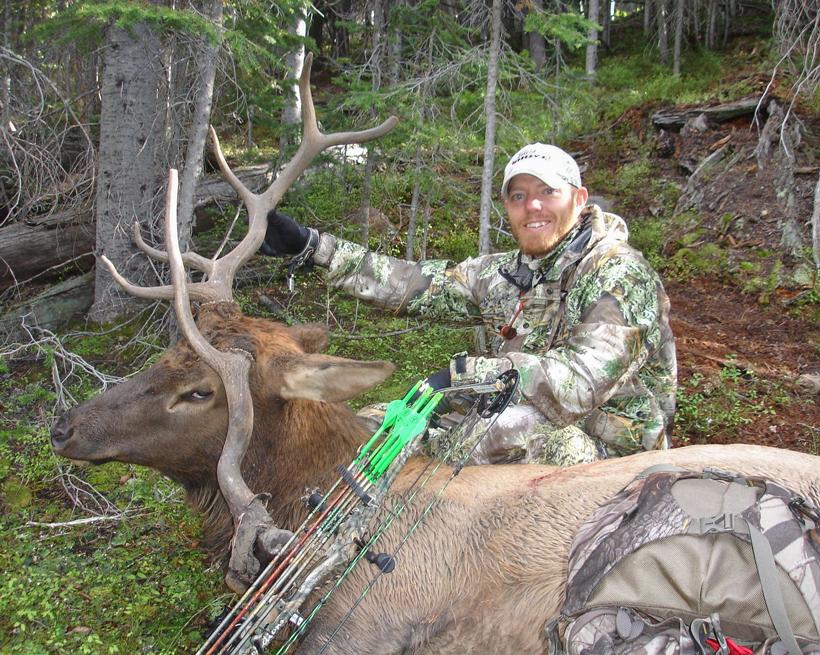

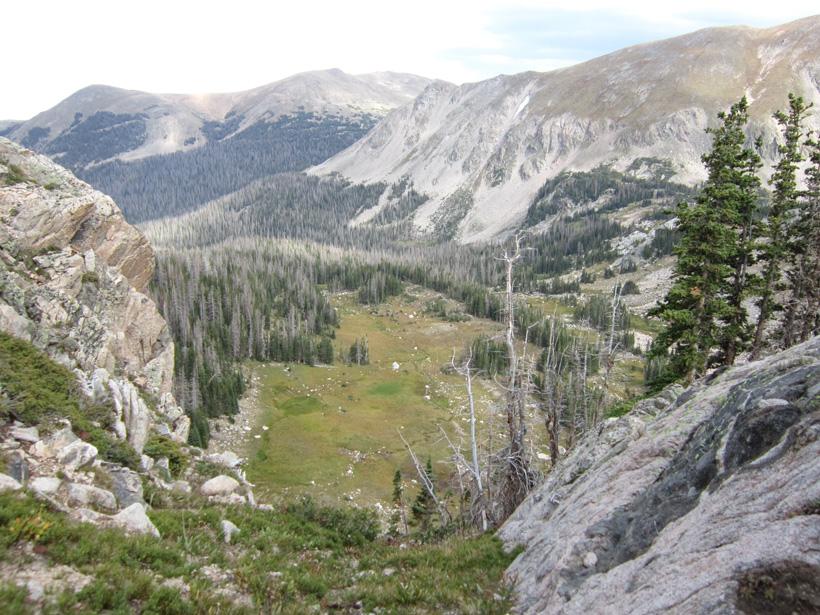
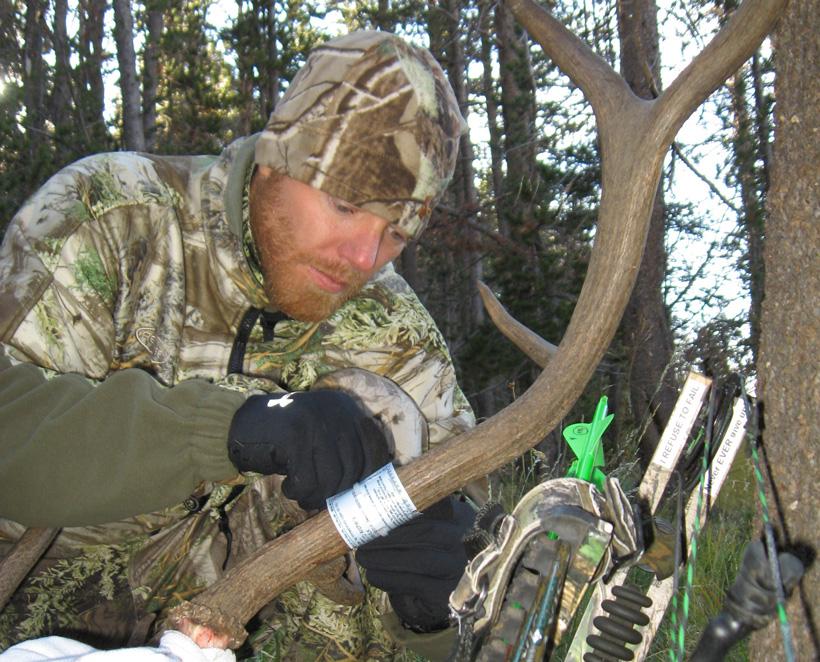
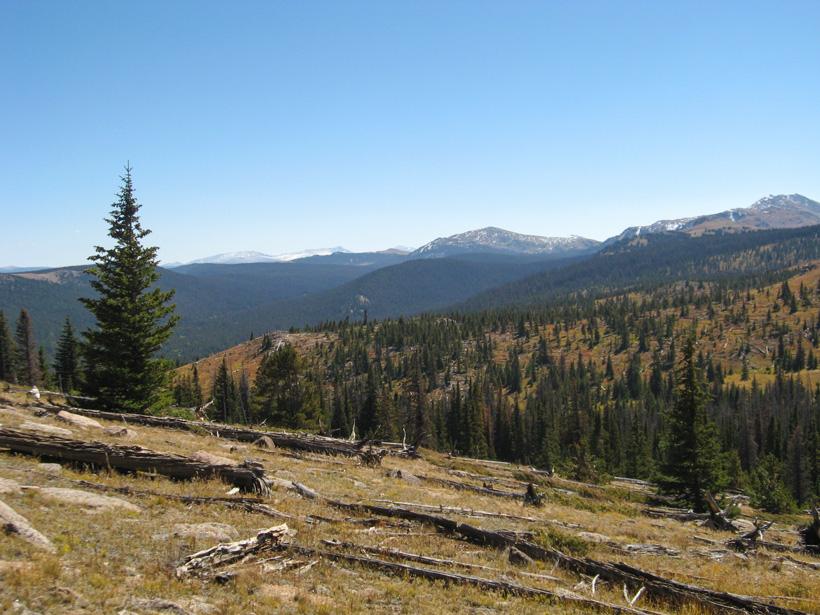
So you did not draw an elk tag, but you still want to hunt elk this year? No need to panic. Colorado is the perfect place and an over-the-counter (OTC) elk tag is the answer. With roughly 113 over-the-counter archery elk units and 78 second season and 77 third season rifle units, Colorado is abundant with elk hunting opportunities. The state also boasts the largest elk herd in the U.S., giving all elk hunters an opportunity to hunt elk this fall. With elk hunting, if you wait your entire life to draw a limited entry tag, then you will not have the experience and firsthand knowledge of elk behavior and will probably end up going home empty handed. Colorado also holds the highest success rate on elk hunting in the west for over-the-counter hunters. Plus, Colorado is virtually free of wolves and grizzly bears. This is definitely a positive when considering camping in the backcountry.
As a nonresident, it can be a bit expensive and will cost you $803.39 for the tag and $12.15 for a habitat stamp. I think that this is well worth it for the chance at arrowing a good public land over the counter bull. All over the counter elk tags go on sale roughly the first week of August every year at 9:00 a.m. (MDT). You can find a list of all the available seasons and units on the Insider Unit Profile filtering section along with a quick reference on Colorado’s Big Game Hunting Planner. Be aware that there is also an antler point restriction in some of these units. Make sure to research your unit before you buy your tag
The archery season for elk typically begins on or around September 2 and ends September 30. Muzzleloader season runs September 14 through 22 and overlaps the regular archery hunt. It does not offer any OTC opportunities. Your best chance to find OTC rut action is during the archery seasons. There are no OTC first rifle elk seasons available, but the second rifle season is available in many units across the state and typically runs from October 26 through November 3. The third rifle season is typically around November 9 to November 15 this year. All of these seasons combined with the plentiful over-the-counter units result in a lot of opportunity for elk hunters every single year.
With a little research and hard work Colorado can be an elk hunters dream. For many years now, I have had to seek out nonresident opportunities to solidify a chance at hunting a bull elk. Losing out on an elk tag in my home state of Utah is no longer a life altering situation. I believe that Colorado is overlooked as an bull elk hunting oasis and here is why.
Colorado has more elk than any other state and in some of these units there are coveted wilderness areas that hold outstanding elk hunting and produce bulls well over the 300" mark. While I a'm earning points in states like Utah and Arizona, I can hunt these wilderness areas solo and find the type of adventure that I am after. I prefer the do-it-yourself (DIY) style of hunting that allows me to hunt at my own pace in the places I want to explore. Other states, such as Wyoming, do not allow hunters to hunt wilderness areas without a guide.
Do not let the idea of backcountry wilderness scare you away from an OTC hunt! If you are looking for some assistance with the logistics of the backcountry, there are plenty of outfitters in Colorado. An outfitted hunt may even help to improve your odds of successfully harvesting a big bull, but make sure that you understand that an outfitted hunt costs additional money.
It may be helpful to know that there are a handful of Colorado outfitters that will come in and haul out your trophy for as little as $250 per animal with some some prior arrangement and means of communication once you got your animal down. This can be money well spent when you have been hunting over hard terrain for days. Your body — and hunting buddies — will thank you.
Another trick to consider when deciding where to hunt within the state is through conversations with area biologists and game wardens. A friendly approach and a simple phone call to the Colorado Division of Wildlife will quickly route you to someone who knows the area and is willing to talk.
Regardless, the fact that you can hunt OTC bulls that easily exceed the 300'' mark every year while you build points in trophy units keeps Colorado on my radar year in and year out. Before you begin calling biologists and game wardens, make sure you do your research first. Study the Colorado Unit Profiles to help narrow your search. Using this resource will help narrow down your list and allow for the area specialists you call to give you all the information you need on a few select units.
Obviously, we are not the only ones who know about the endless opportunity in Colorado. There are more and more extreme backcountry hunters now than ever as well as plenty of road hunters to contend with. This is why utilizing tools like GOHUNT’s Insider for harvest success and tag quotas along with GOHUNT Maps to look for areas that are a little harder to get to than others will give you an advantage. One of the most successful ways I have learned to find and hunt these OTC units is to start with units that have trailheads that eventually lead into a wilderness area. Typically, I already have a particular unit in mind based on it having a wilderness area with plenty of surrounding backcountry. I have found that the most amazing hunting usually requires going into a little rougher country.
When talking with a biologist or researching an area, it is important to understand the gray area. Many guided hunters and backcountry hunters either pack in or hike in anywhere from six to ten miles while other hunters park at the trailhead to venture only one to three miles in. Hunters that are only hiking in one to three miles may, or may not, stay on the mountain. This is the gray area that I am referring to: that area in the middle of both groups that for many years has produced consistent results for me. Elk are far from stupid and know where the least amount of pressure is and this gray area is where they tend to go. In reality, this country will likely be rough at times because it is usually the ascent into the wilderness, but it almost always holds elk and can be an absolute rut fest.
These gray areas do not always border wilderness areas and can also be in places with a good amount of backcountry surrounded by country roads. Typically, this type of country looks rugged enough to keep the weekend hunters away. I pay close attention to terraces and small drainages in these gray zones where a bull may push his cows away from the pressure. There is almost always water here and usually dark to broken timber. Most of the elk we have taken in this type of country have been in the dark timber. It is necessary to be prepared for a physical experience hiking, stalking and packing over deadfall.
I almost never bother with packing a spotting scope because once you are in there, it is thick and you will be chasing bugles with the likelihood of never being in a place to justify the use of a scope. I also prefer to seek out and narrow down these units based on record book entries by county using the Insider program. GOHUNT lists entries by county on their species breakdown section and then breaks it down to the unit level to help quickly narrow down the state's units if you are looking for that next level bull. Keep OTC units that border Limited Entry units in mind as well. They have been known to produce some quality bulls from what has been called trophy spillover. This system has produced on both archery and rifle hunts for me for many years.
Once you have decided which unit you want to hunt, purchase a cheap forest service map that will provide a basic overview of the unit. You will want this map and a pencil ready when you begin your phone calls to biologists and game wardens. They will rattle off canyons, creeks and surrounding areas that you will want to mark on the map. Even if the first person you talk to gives some fantastic information, continue calling a few others. Knowledge is key and the more you know will only give you an even better advantage. All the Colorado Parks & Wildlife office numbers can be found on the inside of the first page in their 2015 Big Game proclamation book.
Many times you will receive some additional information on key hot spots from those who have been in the area recently. More than once my calls have led me to talking with guys who have logged or guided in an adjacent area. This extra information has turned me onto many good bulls.
Once you have made your calls, it is time to use tools like GOHUNT Maps. I like companies that build custom maps for hunts like GOHUNT so that I can build a map around the exact place I want to hunt. Not only are these maps accurate, but they can be used in conjunction with their mobile app to make it easy to locate the exact area where I want to be. This can be paramount to a good hunt since many times I have never stepped foot in the area before.
This is where GOHUNT Maps can be an incredibly important asset to scouting for a hunt. Locating areas on the map and using GOHUNT Maps to see a birdseye view of the area can save you miles and miles of unnecessary hiking only to find out that the area was not quite what you thought it was. With a custom map and time spent on GOHUNT, you should have a pretty solid idea of what you are getting into before you arrive.
There are many areas across Colorado that could provide elk hunting action. My recommendation is that you rule out any of the units located East of Interstate 25. Although many of these plains units do hold some elk, the numbers are generally low and the struggle with private property is just not worth it.
Northcentral Colorado holds the majority of Colorado’s elk. It is also home to some units with the most OTC opportunity. The gigantic Flat Tops Wilderness area is found within this region. This is timbered backcountry galore. Many units in this area, like Unit 25, offer a chance at a mature, branch antlered bull, but do not expect to harvest a Boone and Crockett qualifying bull. Unit 15 will provide a chance to get back into the Sarvis WIlderness area and provide a chance at a respectable bull. Unit 14 is also a great location for the early season, backcountry archery hunter. Unit 28 is another highly public land unit that is a great OTC early season choice.
South Central Colorado is home to some great backcountry adventure with some of the most scenic high country anywhere. Units 53 and 54 offer an opportunity to head into the West Elk Wilderness and get away. If you plan to go here, make sure that you hike beyond the day hikers in order to find the elk. Many hunters try to day hunt the edges of the wilderness. Other units like 79, 80 and 81 also have good elk hunting if your trophy expectations are realistic.
,Along Western Colorado you will find nearly all of the top-end draw-only elk areas. There are some units that can provide a great OTC elk opportunity. Unit 21 and Unit 30 are not high country units, but still offer a good opportunity for an early season archery elk hunt. The trick is to venture far from the roads because trucks and ATVs are found all over the road system and could disturb your chances. Unit 62 and Unit 70 have long been favorites among some of the later rifle OTC season hunters thanks to the amount of public land found within these units at the right elevations for rifle hunts.
These are just a few of the many units that can provide an awesome OTC opportunity. Please do your own research to uncover other options that may better fit your hunting style and limitations.
With the archery hunt opening the end of August, I plan my hunts toward the end of September with the goal of being there as the rut hits full swing. Remember that while you will need to purchase your license and stamp prior to the season starting, you can wait to go hunting anytime during that season.
Even though the rut will be cranking in late September, the downside is that the elk have most likely heard enough "bugles" by then. This can make the hunt very difficult, especially when you are trying to get a bull to respond to a call inside of 500 yards. I love calling elk but almost 100% of the time my calls stay in my pocket. If the elk are not talking on their own, I will throw out a locating bugle and hope for a response. If the bull answers, I will chase his bugle and try to slip in quietly.
After I have located elk, it is important to determine where they feed at night and bed during the day. This is not usually as hard as it may sound. Elk are in these gray areas for a reason. They stay in cover all day and feed throughout the night by dropping into the bottoms where the water and feed most generally are located. Then, they climb back up to the cool timber in the mornings. In my experience, this happens regardless of moon phase or distance to feed and water. Once I figure this out, I will be up before light and be in their transition area from feeding to bedding and move according to the elk with intentions of getting in front of them. This strategy has worked for me over the years and has usually resulted in me finding good shot opportunities. This same strategy has also been very effective during both rifle seasons and is one of the easiest ways I have harvested bull elk.
Regardless of hunting method or weapon choice, Colorado is a state that caters to elk hunters. Between the interactive Colorado Parks & Wildlife website and the tools found on GOHUNT’s Insider, you are loaded with information for the OTC elk hunter. This is a guaranteed bull elk tag in your pocket every fall with decent odds of harvesting a quality bull while you are building points for that once-in-a-lifetime elk hunt. Hunt hard this year and I hope to see you on the mountain.